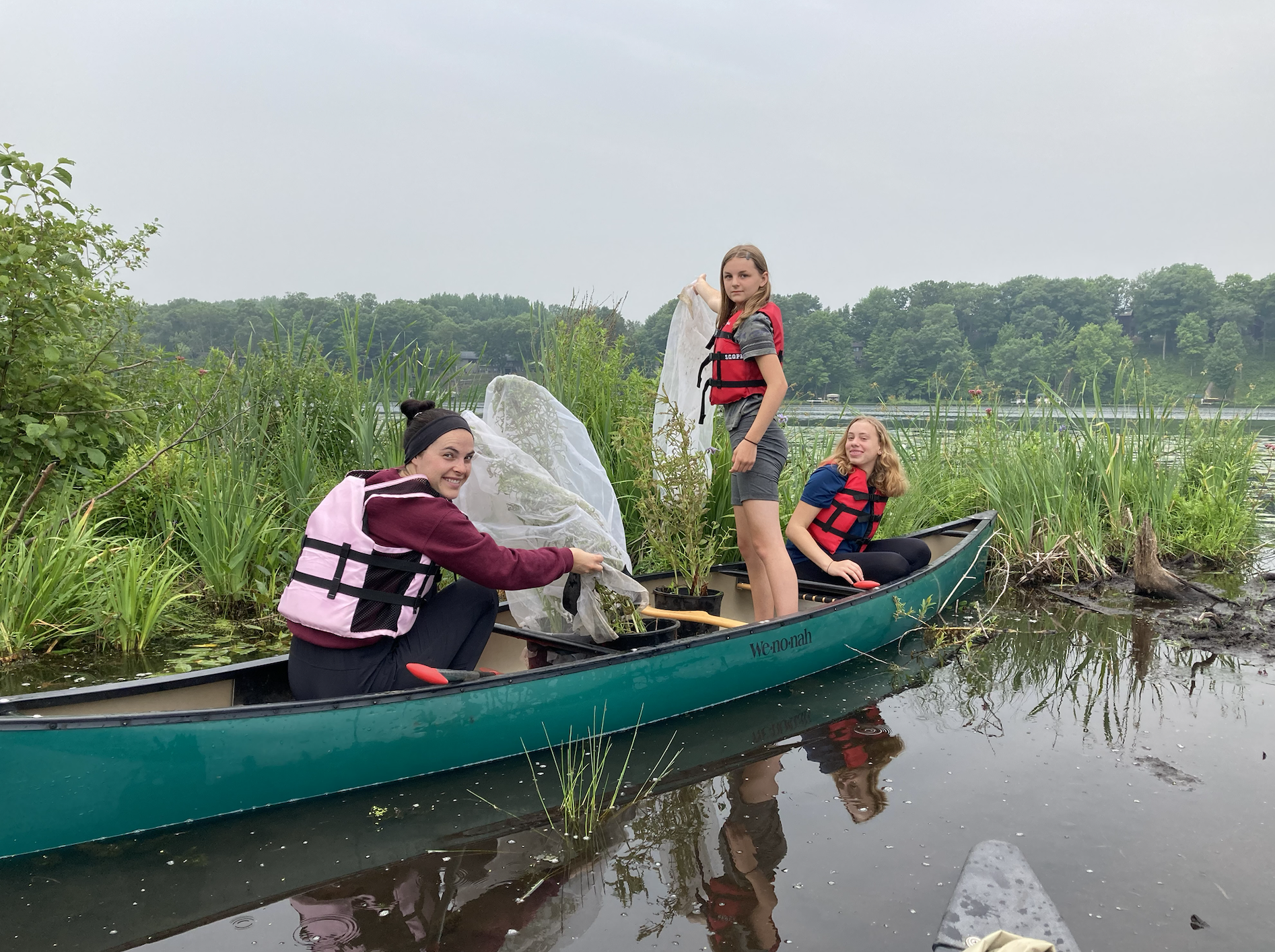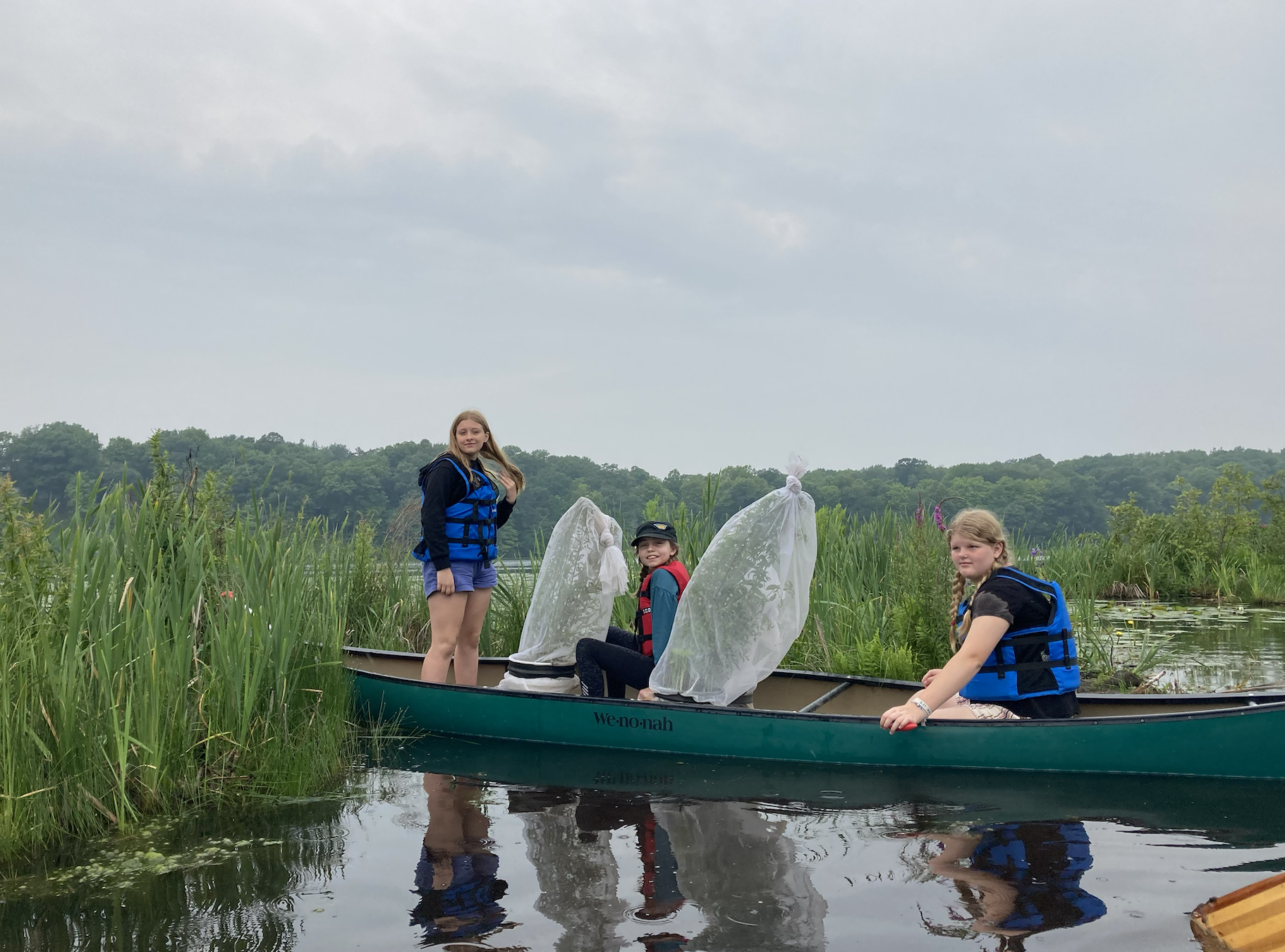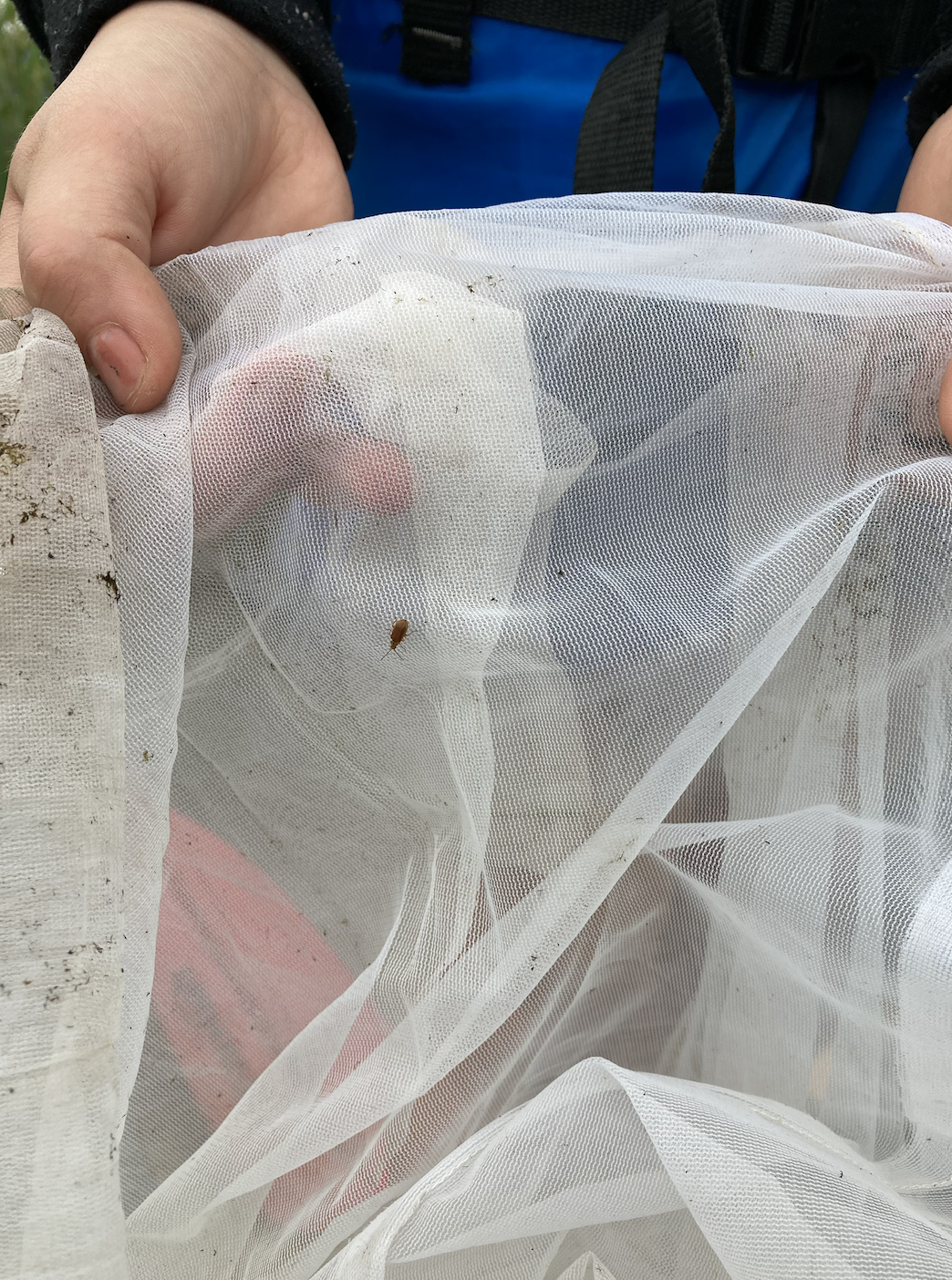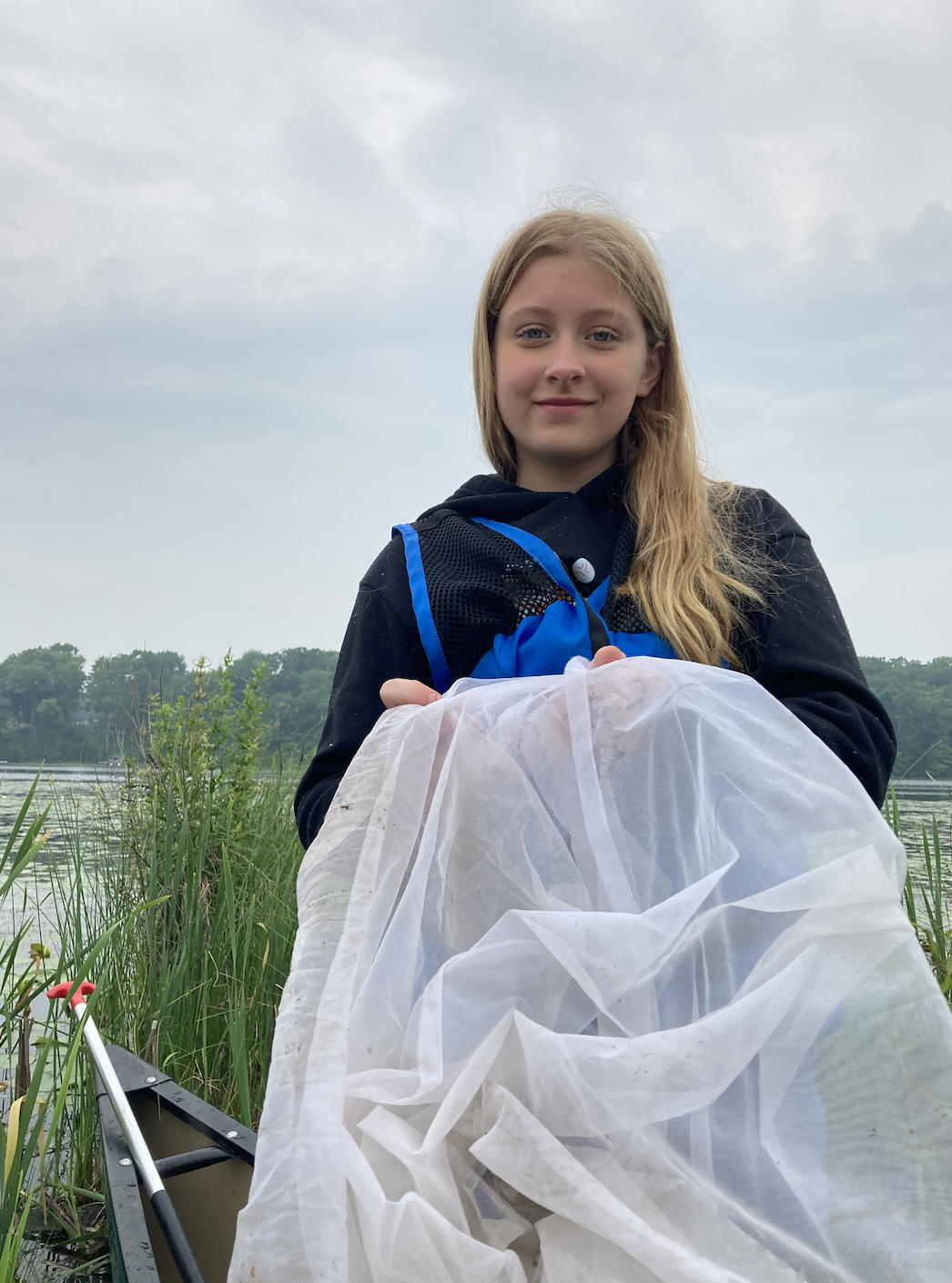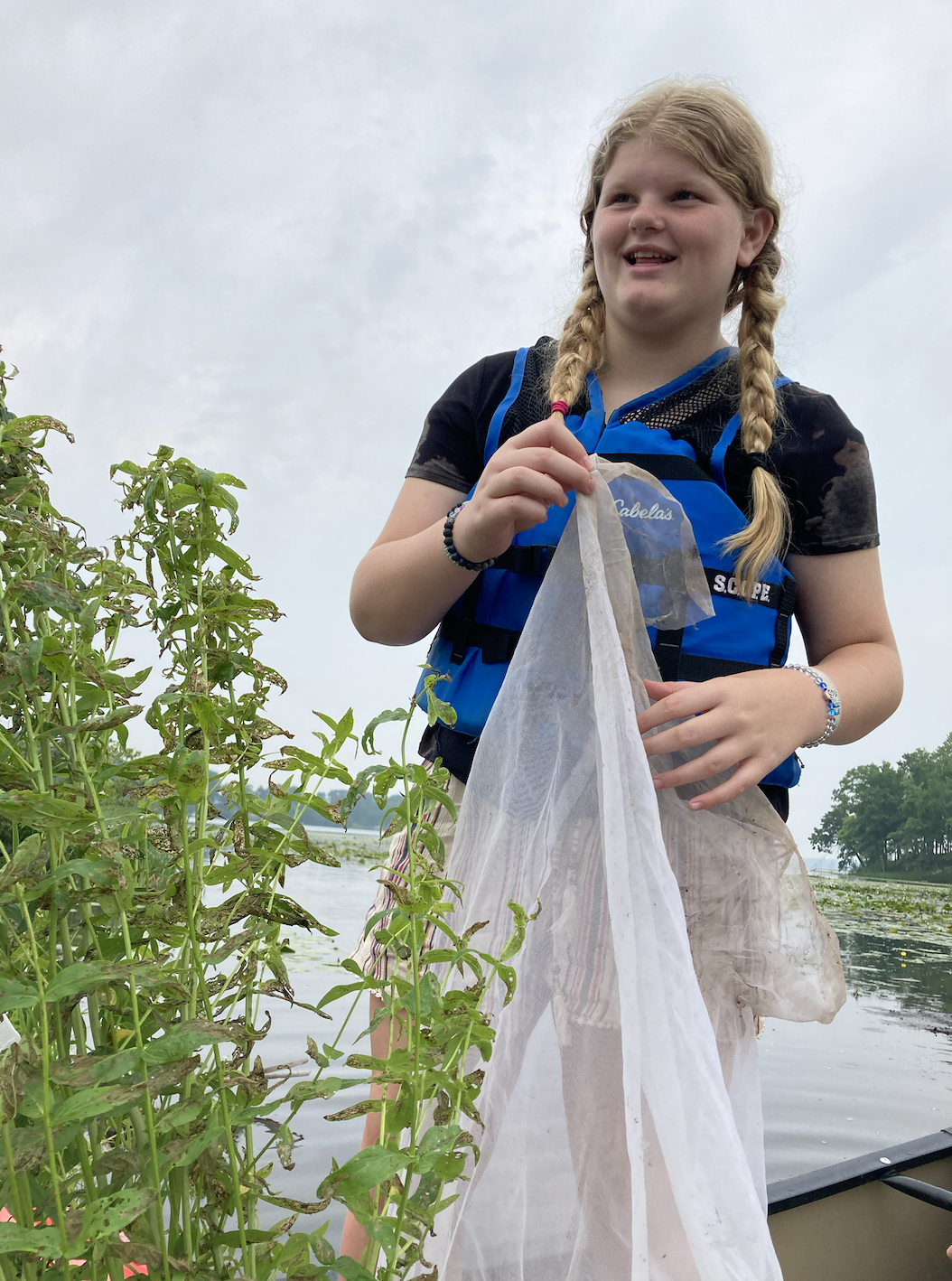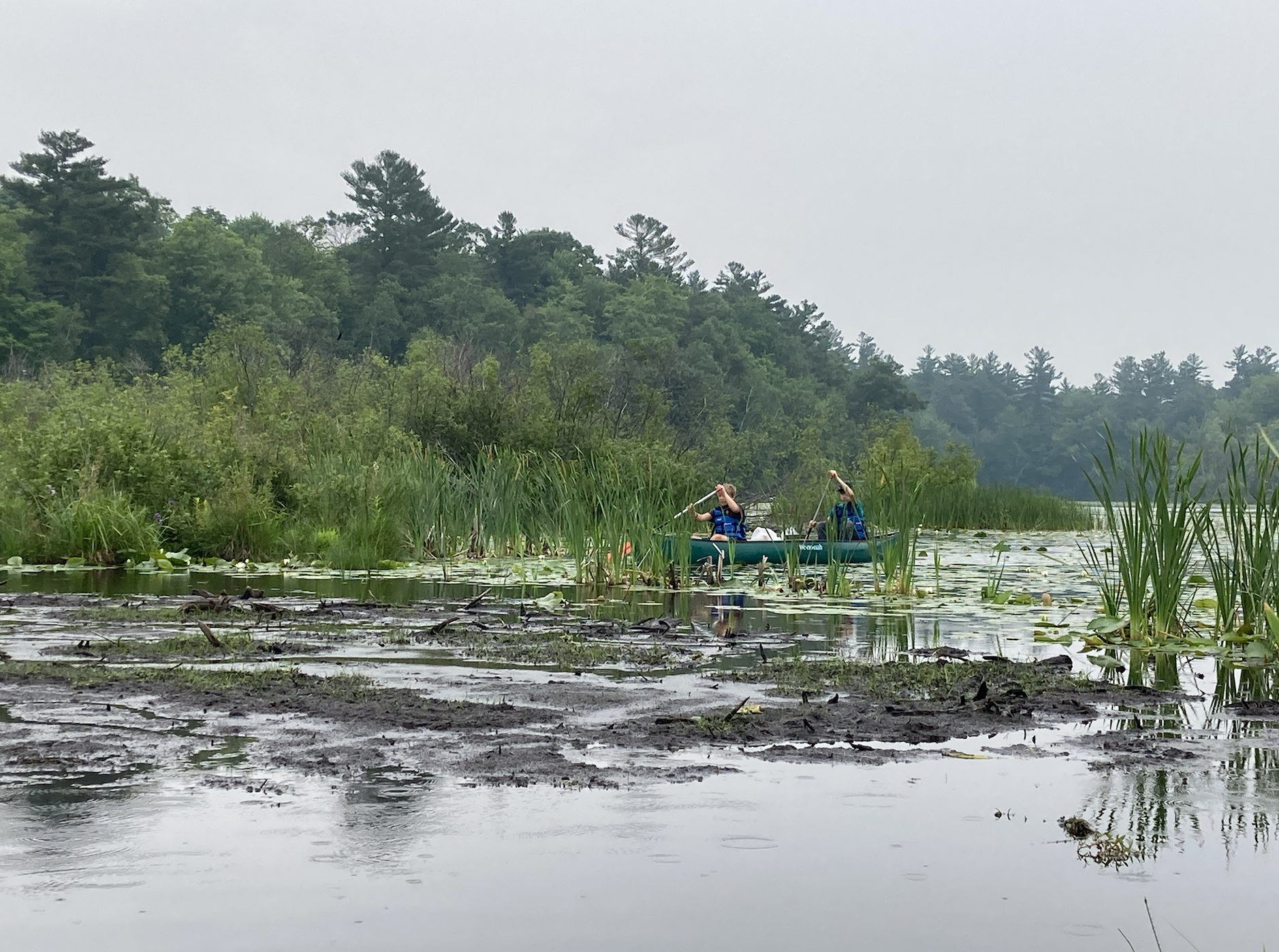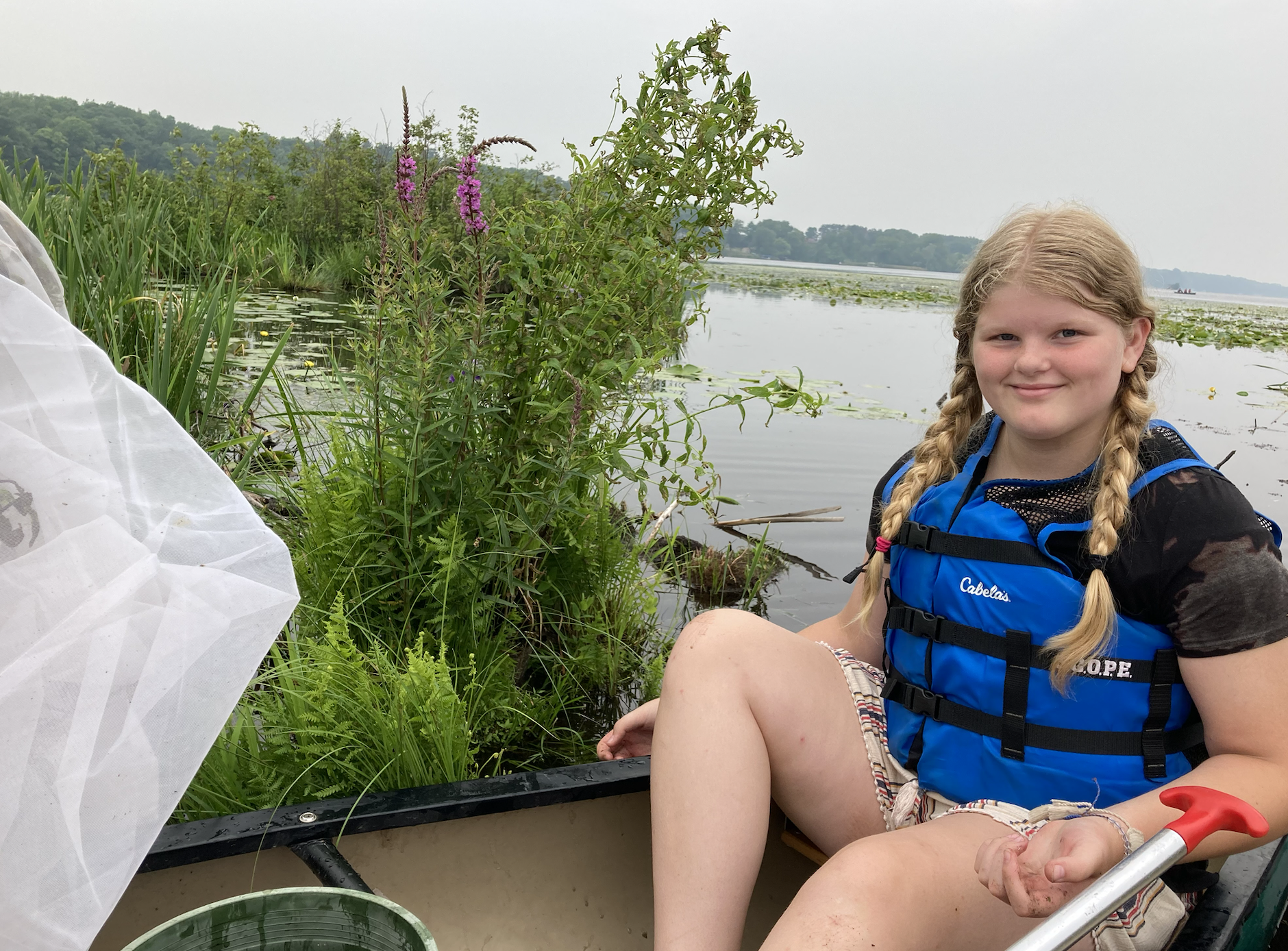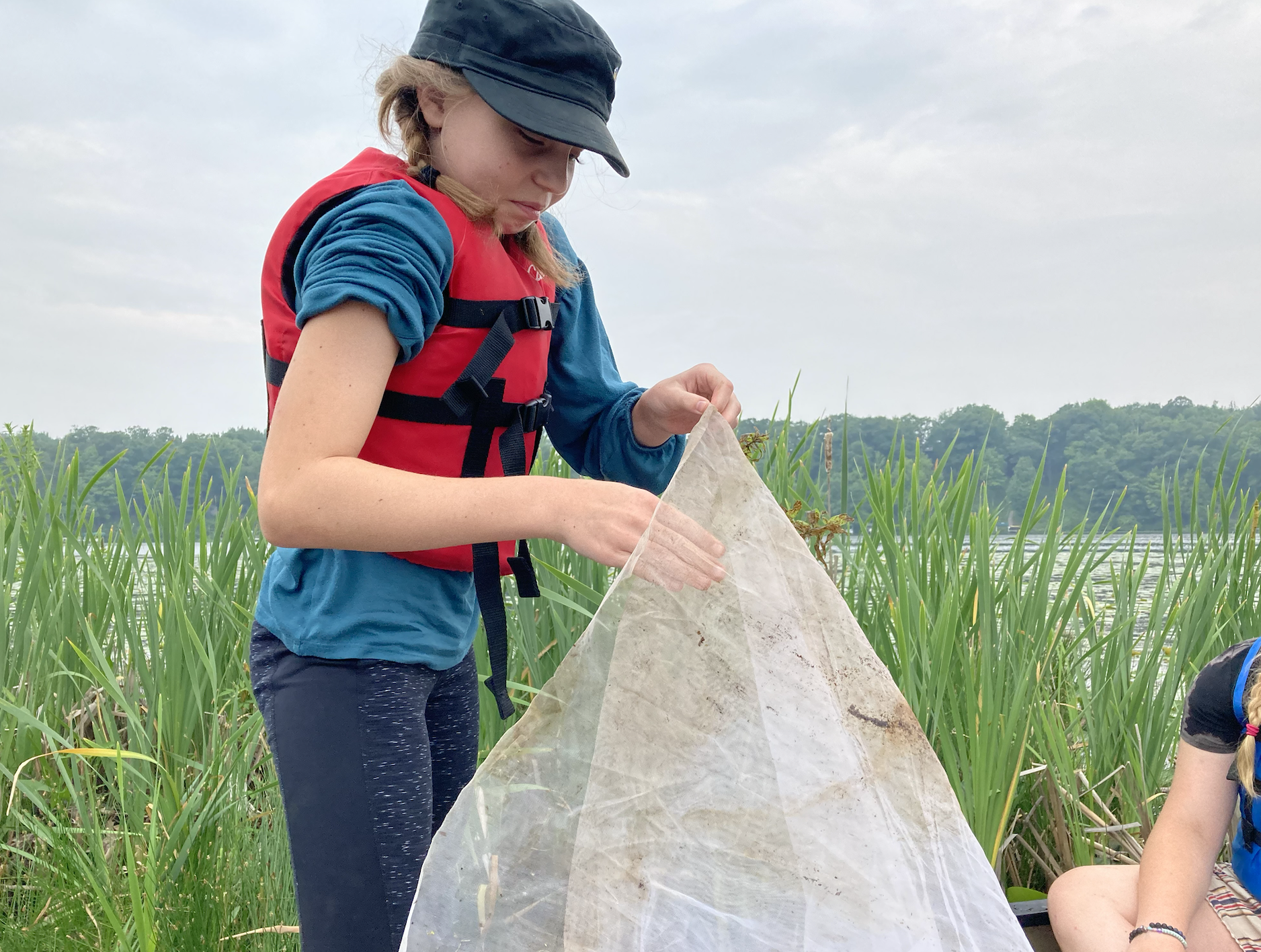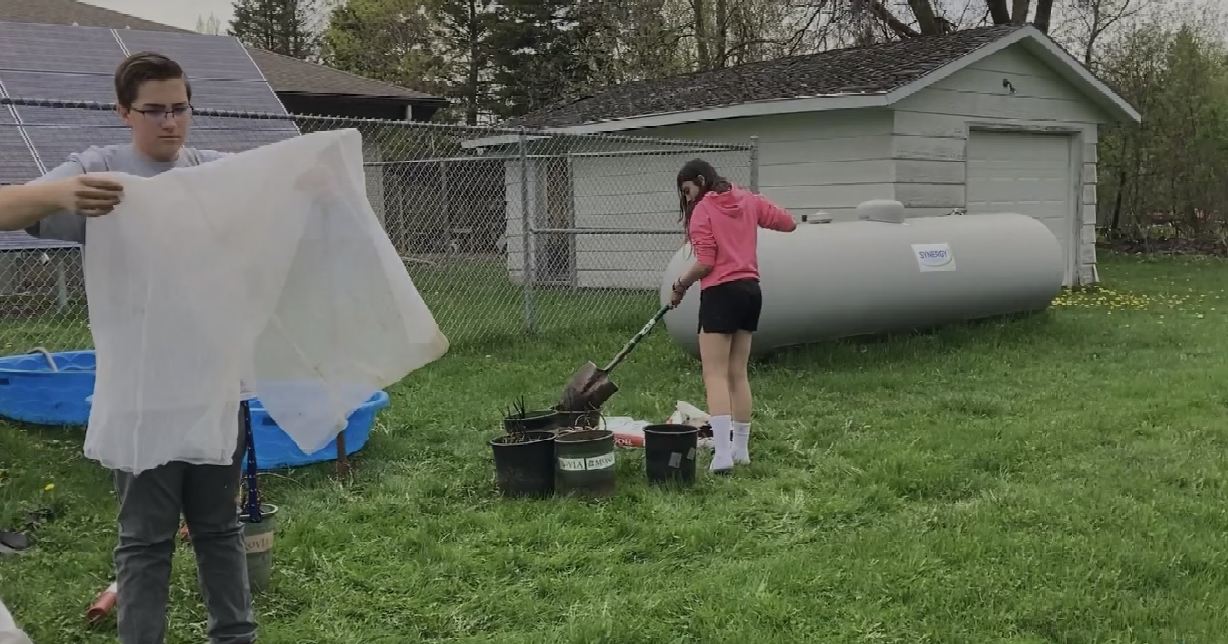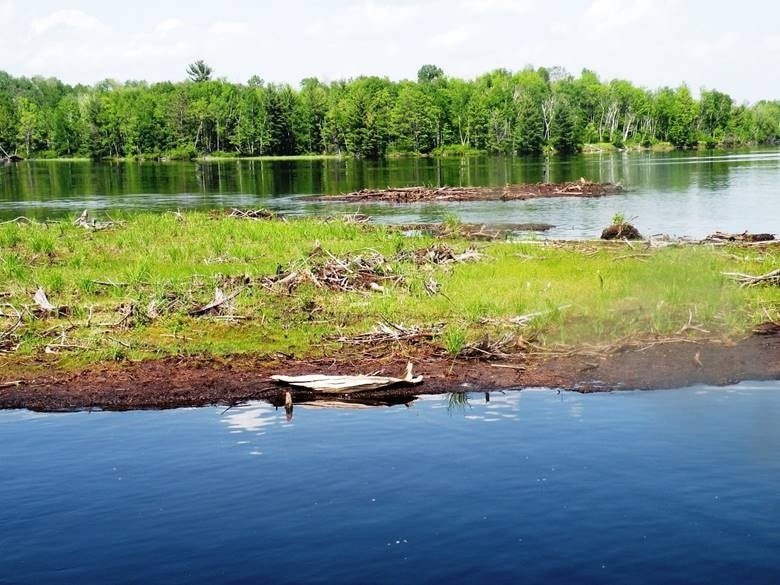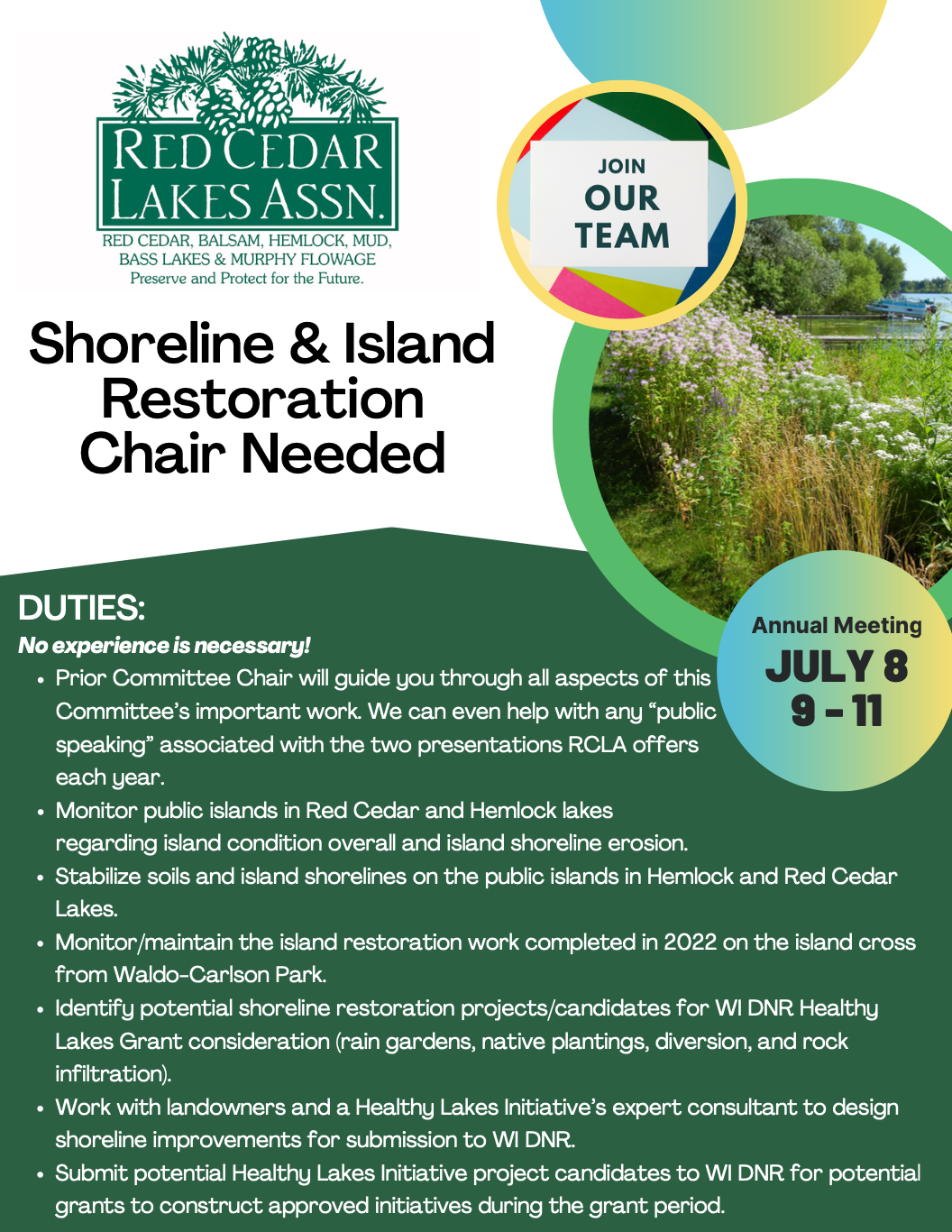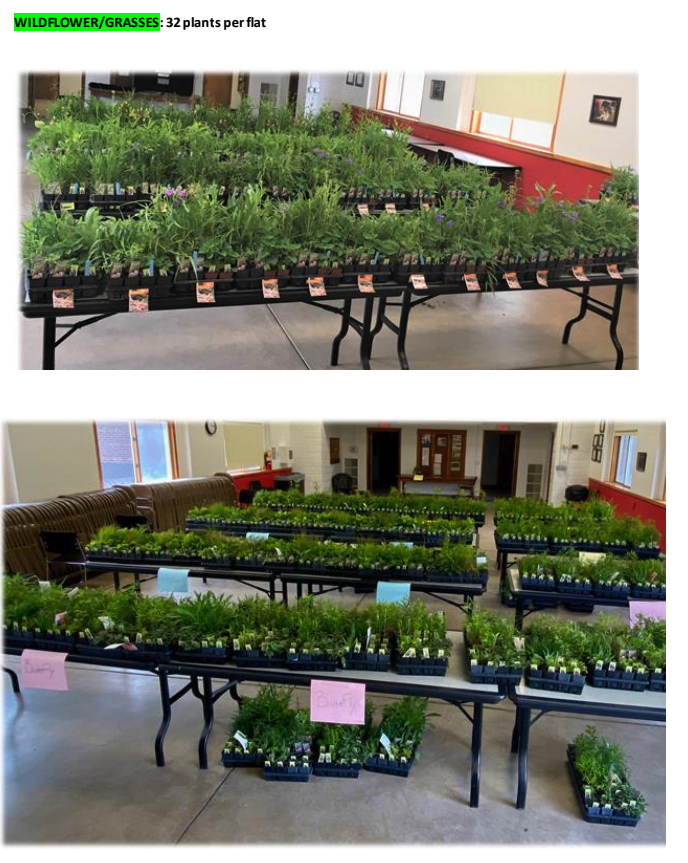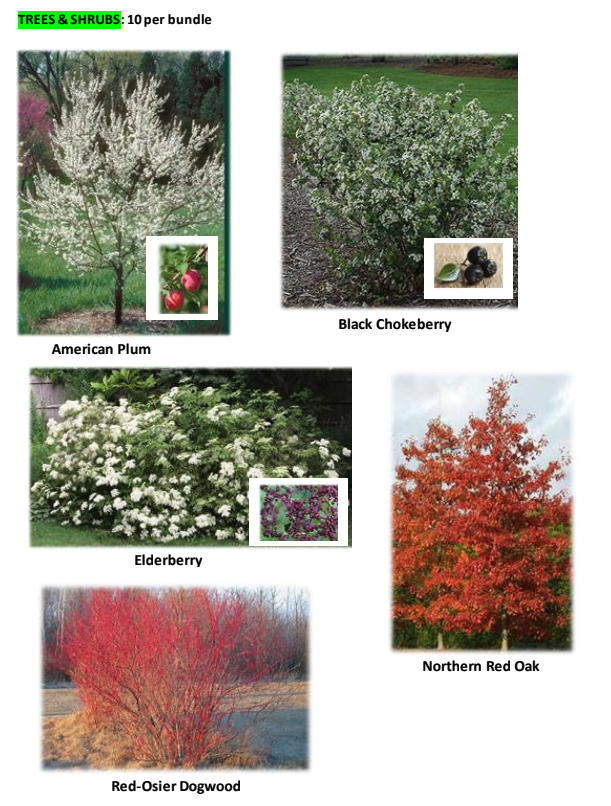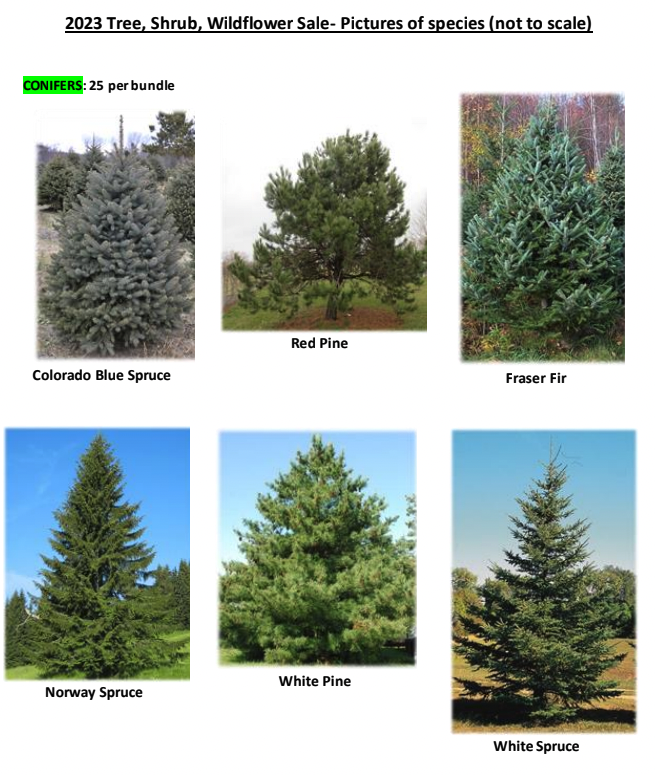If you enjoy lakeshores and wetlands, whether it is because you like fishing, being on the water, or have views from your cabin or home, you probably notice some of the flowers that bloom at different times of the year. In the spring, you see the marsh marigold and native blue flag iris along the shoreline. Most people are familiar with purple loosestrife and the harm it can cause as it chokes out the native plants. But fewer people are aware of the growing problem with yellow iris.
Yellow iris is not native to Wisconsin. In fact, there are no native yellow irises in the state. The yellow iris you may see growing along a shoreline is a fast-growing and fast-spreading non-native aquatic plant that escapes from cultivation into native habitats. It invades shorelines and shallow water areas of lakes, rivers, and wetlands, and crowds out native species, reducing wildlife habitat. Yellow Iris is a Regulated species under the Wisconsin Invasive Species Rule.
The rhizomes can survive droughts, and they float, so rhizomes and seeds can be transported downstream, further spreading the plant. Seeds can germinate even after a wetland area burns. Seeds, stems
and rhizomes escape into natural areas by wind, water movement, earthmoving equipment, transplanting and other human activities. When not flowering, yellow iris may be confused with native species such as blue
flag iris (Iris versicolor), cattails (Typha spp.) or sweet flag (Acorus spp.). Yellow iris does not provide food for native animals and contains large amounts of glycosides that are toxic to wildlife and grazing animals.
During peak bloom time this year, a volunteer with the Rice Lake Protection District mapped the locations of yellow iris on Rice Lake. The plant is spreading rapidly through the south basin (south of Narrows Bridge). The good news is that there are still only clumps here and there on the main part of the lake. Now that the iris have been mapped, the spread will continue to be monitored while a plan is developed for control.
In the meantime, if you are a property owner, there are a few things you can do. Control efforts are
most likely to succeed when plants are small and manageable. Each seed capsule can hold more than a hundred seeds, so removing the spent flowers and seeds can slow the spread.
Mowed plants will regenerate from the rhizomes, so plants must be cut multiple times to exhaust their
energy reserves. Digging is effective for removing small plants and plant populations. Remove as much plant debris as possible, particularly rhizomes.
Use caution and protect your skin when handling yellow iris as they are poisonous, and resin in the leaves and rhizomes can cause skin irritation.
Information from: Citizen Lake Monitoring Network, Wisconsin Department of Natural Resources, and Wisconsin Wetlands Association.






